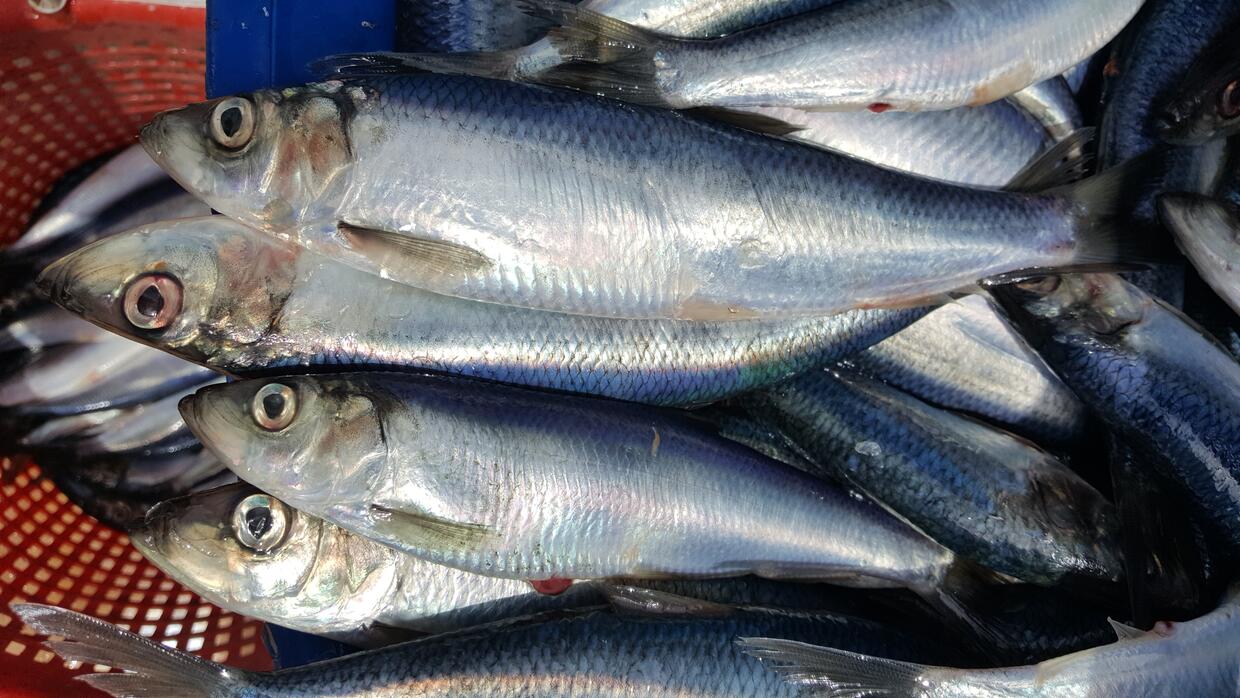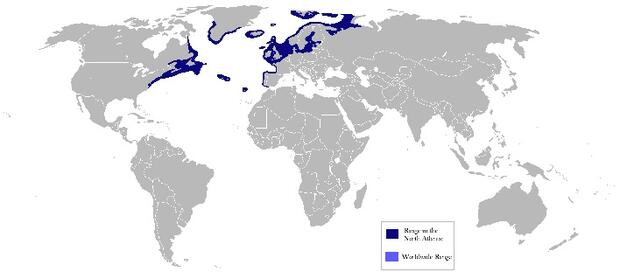Appearance
- Atlantic herring average 10-12 inches in length and weigh about half a pound. Equipped with a silvery shine, they're green-blue on the dorsal and silver on the belly.
- Atlantic herring are skinny with a large mouth and lower jaw. They have a dorsal fin and caudal fin. In appearance, they are like the Blueback herring and American shad.
Atlantic herring facts
- Species name: Clupea harengus
- Zooplankton are the most common prey of the Atlantic herring. This includes copepods, arrow worms, and krill. Unfortunately, Atlantic herring is a popular snack for many species. Sharks, squid, cod, tuna, and other marine mammals all prey on the herring.
- Atlantic herring spawn in late summer/early fall. Depending on size, females can lay as many as 200,000 eggs in sticky mats along the bottom. The young hatch within 11 days of spawning and can live up to 20 years.
- Atlantic herring are pelagic fish. This means they live in the middle of the water column, between the bottom and the surface. They do visit the surface at times, otherwise swimming up to 120 feet deep.
- Commercial fishing of Atlantic herring is important, since the fish is a valuable bait, fish oil, and consumed species for people. Thus the United States works with Canada and European countries to create management programs for the species.
- NOAA Fisheries manages Atlantic herring in federal waters. This is based on guidance from the New England Fishery Management Council. The Division of Marine Fisheries (DMF) manages the species in state waters. DMF follows requirements from the Atlantic States Marine Fisheries Commission. DMF also conducts sampling so that areas can close in the fall to give herring time to spawn.
- You can find fresh herring in some high-end restaurants and fish shops. Herring is often canned, pickled, or smoked. The meat is off-white and soft. Small fish have a more delicate flavor than larger fish, which tend to taste oilier and pungent.
- You can find Atlantic herring along the eastern seaboard of the United States and Canada. They also live in western Europe.
Additional Resources
Contact
Online
Fax
(617) 727-3337

